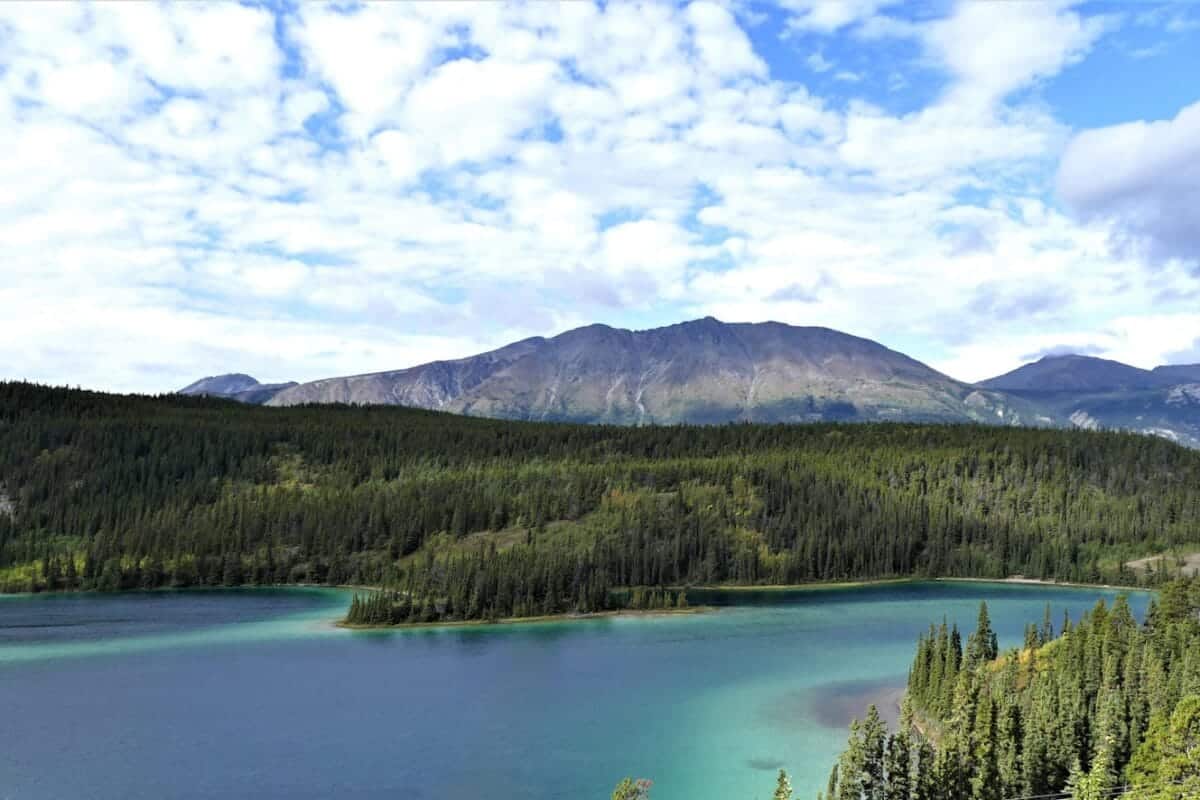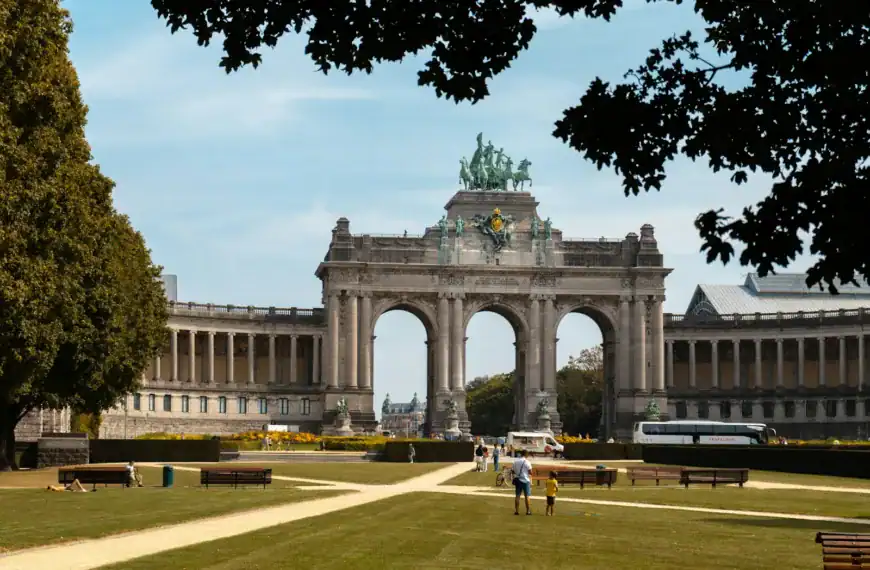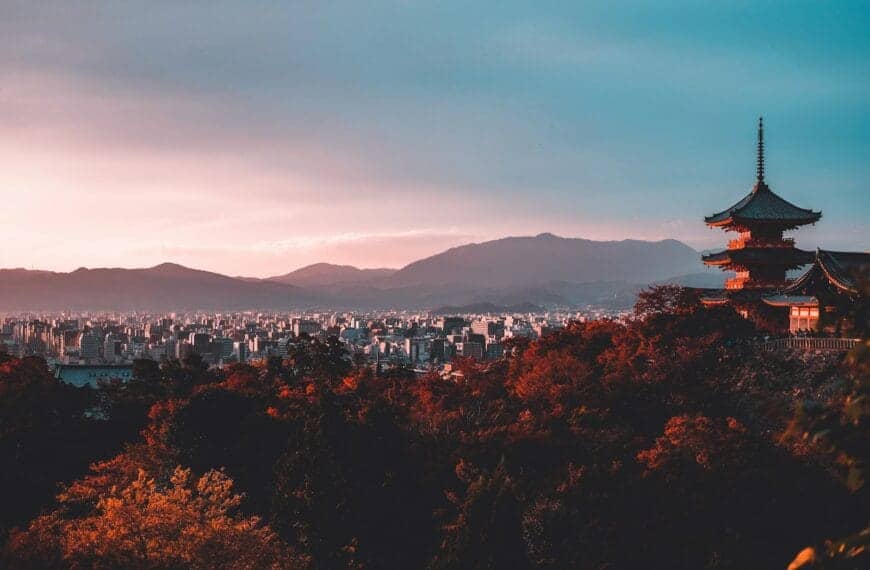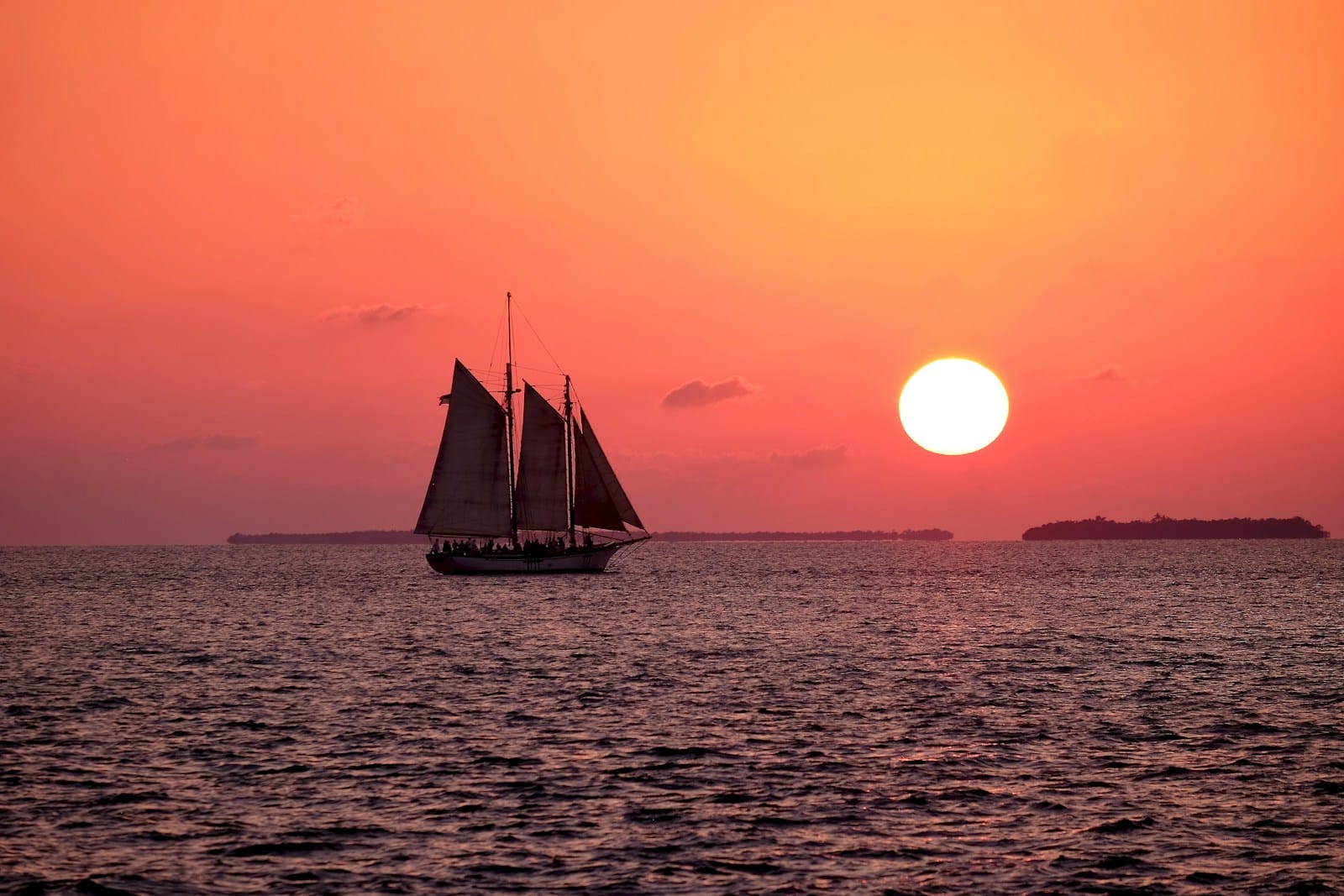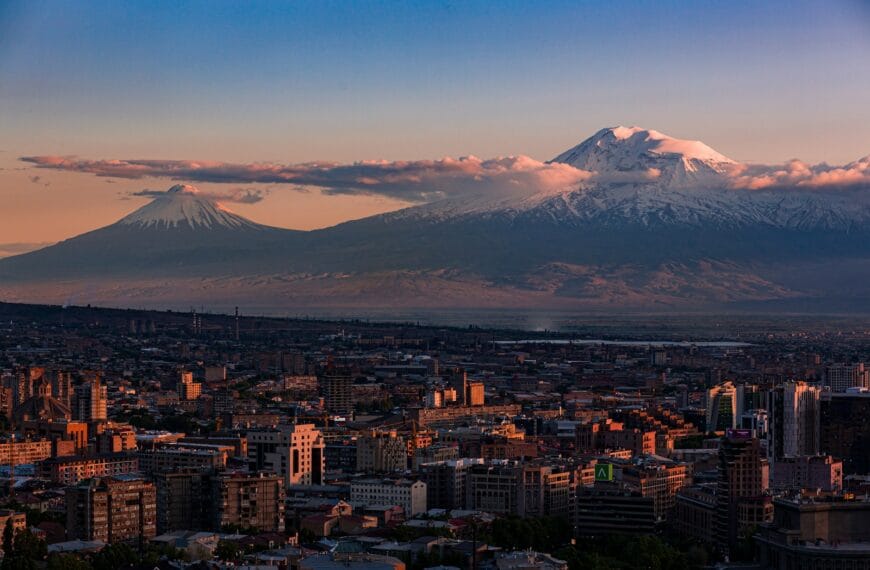Explore Yukon: Canada’s Untamed Northern Frontier
Intro to Yukon Travel Guide
Wild, remote, and exhilarating—Yukon is one of Canada’s last true frontiers. Home to towering mountains, vast tundra, and storied gold rush towns, this northern territory offers travelers a chance to escape the modern world and experience nature in its rawest, most majestic form.
Whether you’re chasing the northern lights, paddling down the Yukon River, or exploring First Nations heritage in Whitehorse and Dawson City, this is a place where adventure and culture meet.
Start your journey with our Yukon Travel Guide and explore all it has to offer—from glacier hikes and gold rush towns to unforgettable Indigenous experiences.
💡Quick Facts:
Destination: Yukon
Continent: North America
Country: Canada
Administrative Division: Territory
City: Capital – Whitehorse
Area: 482,443 km²
Population: ~44,000 (2024 est.)
Density: ~0.09 people per km²
Capital: Whitehorse
Regions/Subregions: Klondike, Southern Lakes, Kluane, Campbell, North Yukon
Official & Regional Languages: English (official); French, and Indigenous languages (Gwich’in, Hän, Kaska, etc.)
Currency: Canadian Dollar (CAD)
Time Zone(s): Yukon Standard Time (UTC−7)
Airports:
– Erik Nielsen Whitehorse International Airport (YXY)
– Dawson City Airport (YDA)
– Watson Lake Airport (YQH)
Climate: Subarctic and Arctic; long winters, short warm summers
Known For: Northern lights, gold rush history, wilderness, wildlife, Klondike Trail, Indigenous culture
🛂Arrival Info:
Entry Requirements:
– Visa-exempt for U.S., EU, Australia, Japan, South Korea, and others
– ETA required for air travelers from visa-exempt countries
Visa-Free Countries: 50+ including U.S., UK, France, Germany, Australia, Japan
Visa-on-Arrival: Not available
Maximum Tourist Stay: Up to 6 months for most visa-exempt visitors
Electronic Travel Authorization: Required for air entry for visa-free travelers
– Visa Portal
– Customs Info
💉Health Info:
Recommended Vaccines: Routine (MMR, DTP), Influenza, Hepatitis A & B
Health Advisories: Cold weather risks; wildlife safety (bears, moose)
Hospitals: Whitehorse General Hospital (primary facility)
English-speaking Clinics: All government and private health facilities
Terrain-specific Concerns: Remote access, frostbite in winter, bear safety
Insurance: Strongly recommended; care is not free for non-residents
✅ Check travel insurance options for travel emergencies, delays, and medical needs abroad — Get coverage here
✅ Stay Informed with Official Updates: WHO – International Travel & Health | CDC – Travel health updates
🚨Travel Advisory:
Current Alerts: None; considered safe
General Safety Level: Level 1 – Exercise Normal Precautions
Regional Restrictions: Road conditions may limit winter access
Local Risks: Wildlife encounters, severe winter weather, rural remoteness
Civil Rights Concerns: None reported
✅ Stay Informed with Official Updates: US Travel Advisory | UK Foreign Travel Advice
📅Holidays:
Major National Holidays:
– Canada Day (July 1) – National celebration
– National Day for Truth and Reconciliation (Sep 30)
– Victoria Day (3rd Monday of May)
Territorial Holidays:
– Yukon Heritage Day (last Friday in February)
Local Events:
– Yukon Quest (Feb) – International dog sled race
– Dawson City Music Festival (July)
💰Visitor Info:
Currency: Canadian Dollar (CAD)
Exchange Tips: Use ATMs in Whitehorse; avoid airport currency booths
ATMs: Available in Whitehorse, limited in small towns
Cards: Widely accepted in towns; cash needed in remote areas
Tipping: 15–20% standard in restaurants and for services
Tourist Taxes: 5% GST; some accommodations add municipal tax
Daily Budget:
– Budget: $80–$120 CAD
– Midrange: $150–$250 CAD
– Luxury: $300+ CAD
✈️Airports:
Main International Airport: Erik Nielsen Whitehorse International Airport (YXY)
Address: 75 Barkley-Grow Crescent, Whitehorse, YT
One main runway; serves domestic and seasonal international flights
Airlines: Air North, Air Canada, WestJet
Secondary Airports: Dawson City Airport (YDA), Watson Lake Airport (YQH) – used for regional flights and charter access to remote areas.
✅ Delayed or canceled flight? Check if you’re eligible for compensation
🚍Transport:
Local: No major public transport; walking and taxis in Whitehorse
Intercity:
– Alaska Highway drive routes; Yukon-Wilderness coach in summer
Ride-hailing: Not active
Driving Laws: Drive on right; winter tires mandatory in season
Rental Cars: Available in Whitehorse (book early in summer)
Scams: Very rare; low-crime region
✅ Book reliable airport transfers and in-city rides in advance. Reserve your ride here
📶Connectivity:
SIM/eSIM: Rogers, Bell, Telus; SIMs available in Whitehorse
Mobile Coverage: Good in towns, patchy to none in rural backcountry
Public Wi-Fi: Available in hotels, cafes, libraries
Roaming: Free for Canadian plans; check international fees
✅ Stay connected abroad with affordable eSIM data packs. Get your eSIM here
📜Laws & Etiquette:
Drinking Age: 19+
Alcohol: Legal; restricted sales hours
LGBTQ+ Status: Legal and protected; inclusive environment
Etiquette: Respect Indigenous communities, nature and trail rules
Cultural Taboos: Do not photograph Indigenous ceremonies without permission
Photography Rules: Drones restricted in national parks
🛡️Emergency Info:
Emergency Numbers: 911 (police, ambulance, fire)
Tourist Police: Not specific, but RCMP serves all areas
U.S. Consulate: Vancouver (nearest major U.S. office)
Traveler Support: Whitehorse Visitor Centre
✅ Use embassy locator tools: Embassies Worldwide
🌦️Weather:
Climate Type: Subarctic and Arctic
Best Time to Visit: June–August (mild temps, long daylight)
Winter Season: October–April; extremely cold, ideal for aurora
Average Temps:
– Summer: 10–20°C (50–68°F)
– Winter: −10 to −35°C (14 to −31°F)
Aurora Viewing: Peak from November to March
✅ Stay prepared—check the weather forecast for your destination — Weather Forecast
Yukon Towns & Major Destinations
- Whitehorse
The territorial capital and largest city, Whitehorse offers a vibrant arts scene, Indigenous culture, and access to some of the territory’s most spectacular natural areas. It’s also home to the SS Klondike National Historic Site and the stunning Miles Canyon. - Dawson City
Step into the past in this gold rush boomtown. With wooden boardwalks, historic saloons, and the infamous sourtoe cocktail, Dawson is rich in personality and perfectly preserves the Klondike era spirit. - Watson Lake
Located near the BC border, this town is known for the Sign Post Forest, a quirky global landmark where visitors add their own signs. It’s also home to the Northern Lights Space and Science Centre. - Haines Junction
The jumping-off point for Kluane National Park, Haines Junction is a small village surrounded by towering peaks and ideal for outdoor lovers. - Old Crow
Accessible only by air, Old Crow is a remote Gwich’in village located north of the Arctic Circle. It offers an immersive cultural experience and pristine wilderness rarely seen by outsiders. - Carcross
A small town with big charm, Carcross features colorful Indigenous art, mountain biking trails, and access to the smallest desert in the world—the Carcross Desert.
How to Choose Where to Go in Yukon
The Yukon is vast—larger than California—but with only 40,000 residents. Where you go depends on how off-grid you want to get and what kind of adventure you crave.
- Southern Yukon (Whitehorse, Carcross, Haines Junction): Best for first-time visitors. Offers good infrastructure, road access, and iconic parks like Kluane.
- Central Yukon (Dawson City, Tombstone): Great for history lovers and hikers. This is gold rush country with stunning alpine terrain.
- Northern Yukon (Old Crow, Arctic Circle): For serious explorers. Fly-in only and home to powerful Indigenous communities and untouched land.
- Along the Alaska Highway (Watson Lake): A road-tripper’s dream with quirky roadside stops and panoramic landscapes.
Natural Escapes & Scenic Highlights
- Kluane National Park and Reserve
A UNESCO World Heritage Site and home to Canada’s tallest peak, Mount Logan. Trek through alpine meadows, spot Dall sheep, or book a flightseeing tour over its massive icefields. - Tombstone Mountains
Nicknamed the “Patagonia of the North,” these jagged, granite peaks offer surreal scenery and epic hiking. Base yourself at Tombstone Territorial Park’s campground or interpretation center. - Southern Lakes Region
A chain of crystal-clear lakes south of Whitehorse—ideal for kayaking, canoeing, or lounging at lakeside cabins. Marsh Lake and Lake Laberge are local favorites. - Yukon River
Paddle down one of North America’s great rivers. Multi-day canoe trips from Whitehorse to Dawson are legendary among adventure travelers. - Carcross Desert
Technically not a desert, but a glacial sand dune surrounded by boreal forest. It’s the smallest desert in the world and surprisingly photogenic. - Aurora Borealis Viewing
From August to April, Yukon skies light up with the northern lights. For best viewing, stay in Old Crow, Whitehorse, or a wilderness lodge far from city lights.
Cultural & Historic Landmarks
- SS Klondike National Historic Site (Whitehorse)
A beautifully restored sternwheeler ship that once ferried cargo and passengers along the Yukon River. Step aboard and learn about the territory’s riverboat era. - Dawson City Historic Complex
This gold rush-era town is essentially an open-air museum. Explore restored saloons, wooden sidewalks, and sites like the Robert Service Cabin and Jack London Museum. - Kwanlin Dün Cultural Centre (Whitehorse)
A beautifully designed facility celebrating Kwanlin Dün First Nation history, with exhibitions, art, and public events. - Northern Lights Centre (Watson Lake)
This dome-shaped center features educational exhibits and real-time aurora displays—perfect for understanding the science behind the magic. - Tr’ondëk Hwëch’in First Nation (Dawson area)
Learn about traditional knowledge, land stewardship, and Indigenous governance. Local guides offer tours through historic and sacred sites. - Klondike Gold Fields & Dredge No. 4
Step into the world of 1890s gold miners. Try your hand at panning or explore one of the last giant gold dredges still standing.
Local Food, Arts & Experiences
- Traditional Indigenous Cuisine
Sample smoked salmon, wild game, bannock, and boreal berries prepared with ancestral techniques. Some lodges and restaurants offer tasting menus and storytelling dinners. - Local Breweries & Distilleries
Try Yukon Brewing in Whitehorse for craft beers or visit Two Brewers for small-batch whisky distilled with glacier water. - Art & Craft Galleries
Whitehorse and Dawson feature many Indigenous and local artists. Look for intricate beadwork, birch bark baskets, and caribou hair tufting. - Dawson City Music Festival
One of Canada’s most iconic indie music festivals, held every July in the heart of the Klondike. - Dog Sledding Adventures
In winter, mush your own team or ride with a pro through frozen forests. Several operators run tours out of Whitehorse. - Midnight Sun & Winter Solstice Events
Experience near-24-hour daylight in June or deep dark nights in December—with celebrations at both ends of the seasonal spectrum.
Must-See Experiences in Yukon
- Paddle the Yukon River like a gold prospector from Whitehorse to Dawson
- Fly over Kluane’s glaciers for one of the world’s great aerial views
- Watch the aurora dance from a remote lodge or heated yurt
- Join a cultural tour in Old Crow and learn Gwich’in traditions
- Bike the Montana Mountain trails in Carcross
- Pan for real gold at Bonanza Creek
- Book Yukon tours now and dive into the north’s wild soul
Book immersive Yukon tours and experience unforgettable things to do in Yukon — from sacred Indigenous ceremonies and northern lights safaris to glacial hikes and frontier history adventures.
Getting Around Yukon
- By Air
Most visitors fly into Whitehorse (YXY) via Vancouver, Calgary, or Edmonton. Regional flights serve Dawson City and Old Crow. - By Road
The Alaska Highway runs through southern Yukon and connects to British Columbia and Alaska. Roads are generally in good condition, but remote. - Car Rental
Renting a 4WD is highly recommended, especially for access to parks, gravel roads, and northern areas. - Buses & Shuttles
Limited options exist between Whitehorse, Dawson, and major towns. Book in advance. - Local Transit & Tours
Whitehorse has limited public transport. For attractions, consider guided day tours, especially in winter or when roads are closed.
Best Time to Visit Yukon
- Summer (June–August)
Warmest season (15–25°C), long daylight, peak for hiking, paddling, and festivals. Roads and parks are fully accessible. - Fall (September)
Short but stunning. Tundra turns red and gold, wildlife is active, and the aurora returns. - Winter (November–March)
Cold and magical. Best time for northern lights, dog sledding, and snowmobiling. Prepare for -30°C temps and icy roads. - Spring (April–May)
Quiet season with snowmelt, wildlife awakening, and increasing daylight—but some services may still be closed.
Best Travel Itineraries in Yukon
5-Day Classic Explorer
- Day 1: Whitehorse city tour
- Day 2: Drive to Haines Junction + short Kluane hike
- Day 3: Flightseeing over Kluane icefields
- Day 4: Southern Lakes road trip (Carcross + Marsh Lake)
- Day 5: Return to Whitehorse + cultural center
7-Day Klondike Heritage Loop
- Days 1–2: Whitehorse
- Days 3–5: Drive to Dawson City, historic sites + gold panning
- Day 6: Tombstone Park hike
- Day 7: Return to Whitehorse via Klondike Highway
10-Day Wilderness Immersion
- Days 1–3: Whitehorse + Kluane
- Days 4–6: Tombstone + Dawson
- Days 7–8: Flight to Old Crow, cultural visit
- Days 9–10: Return to Whitehorse and relax
Travel Safety & Etiquette in Yukon
- Wildlife: Always carry bear spray. Store food in bear-proof containers. Respect animal distance.
- Driving: Long, remote drives. Fill gas whenever possible. Bring a paper map—cell signal is unreliable.
- Cold Weather: Dress in layers, wear insulated boots, and protect exposed skin in winter.
- Indigenous Communities: Travel respectfully, ask before taking photos, and honor local customs.
- Emergency Prep: Yukon is rugged. Carry a satellite communicator or emergency beacon if venturing far off-grid.
- Water Safety: Lakes and rivers are cold year-round. Always wear a life vest while paddling.
Nearby Provinces & Destinations
- Alaska, USA
A natural extension for road-trippers—visit Anchorage, Denali, and Kenai Fjords. See our Explore Alaska’s Untamed Wilderness - British Columbia
Drive the Alaska Highway or visit Northern BC for more lakes, Indigenous heritage, and hiking. See our Discover British Columbia’s Wild Coast - Northwest Territories
Continue your aurora chase or explore Great Slave Lake and Nahanni Park. See our Northern Lights & Trails in the Northwest Territories
Final Planning Checklist for Yukon
- Book accommodation and car rental early—availability is limited in peak season
- Bring bear spray, extra fuel, and food for long drives
- Check road and weather conditions daily (especially in fall/winter)
- Pack layers and sturdy hiking boots, even in summer
- Carry cash—many remote areas don’t accept cards
- Respect Indigenous lands, stories, and travel guidelines
- Learn about the territory’s gold rush and First Nations before you go
For more expert travel tips, practical strategies, and trusted tools — visit our Homepage and get inspired for your next trip.
Cities and Towns in Yukon
Carcross | Carmacks | Dawson City | Destruction Bay | Faro | Haines Junction | Mayo | Old Crow | Pelly Crossing | Ross River | Teslin | Watson Lake | Whitehorse

